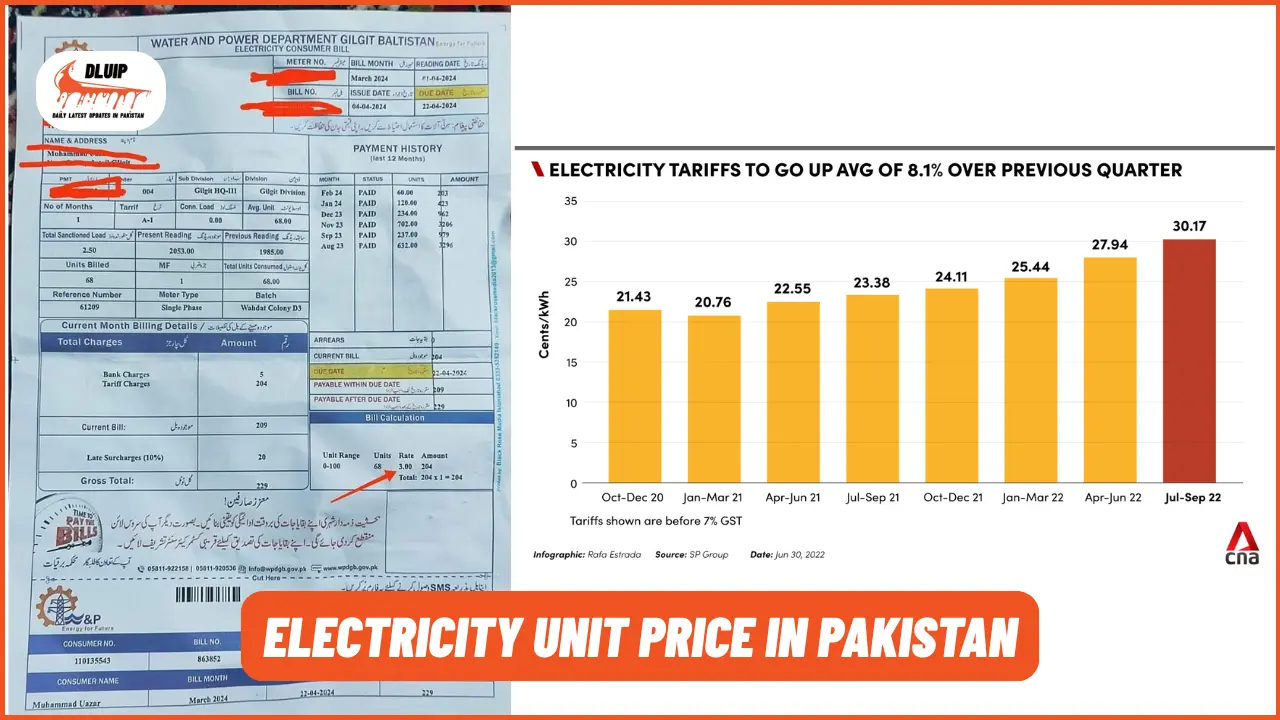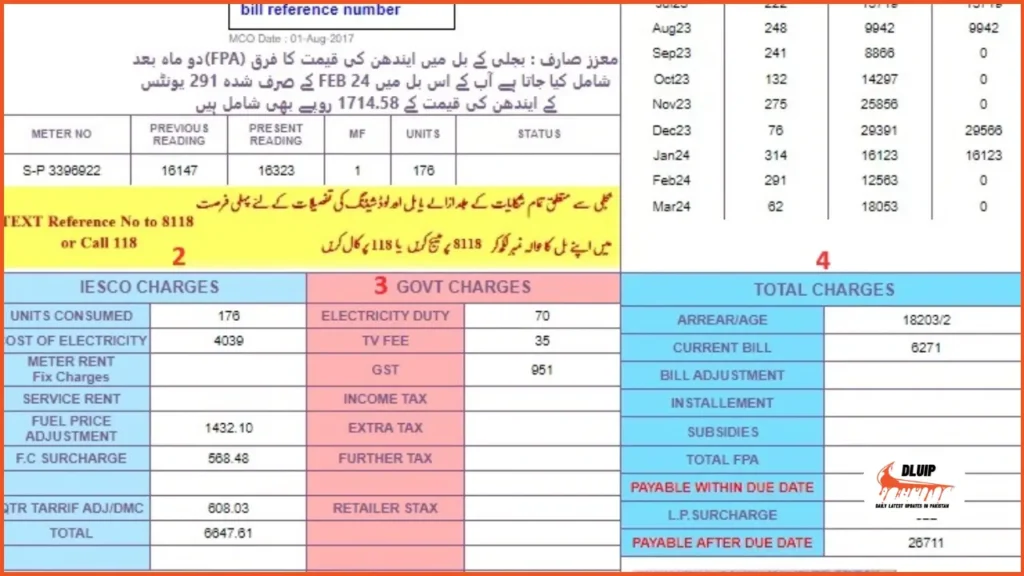Electricity Unit Price in Pakistan: November 2025 Updates

Electricity prices continue to be a growing concern for both households and businesses across Pakistan. The Electricity Unit Price in Pakistan has recently changed with the 2025 updates, leaving many consumers wondering how it will impact their monthly bills. Staying informed about these new rates is essential to managing expenses wisely and planning energy usage more efficiently.
Understanding Pakistan’s Electricity Tariff Structure
Pakistan’s electricity tariff is designed to balance affordability with energy conservation. The rates vary depending on consumption levels and type of user, ensuring a fair distribution of costs across households and businesses.
Explanation of the Tiered Pricing System
The tiered pricing system increases the per-unit cost as consumption rises, encouraging responsible usage.
- Lower consumption is charged at a reduced rate (lifeline tariff).
- Moderate consumption falls into mid-level pricing slabs.
- High consumption is billed at premium rates to discourage wastage.
- Excessive usage may attract additional surcharges or taxes.
Differentiation Between Residential, Commercial, and Industrial Rates
Electricity rates differ based on the type of consumer to reflect usage patterns and demand.
- Residential: Lower base rates for households, with tiered pricing to manage usage.
- Commercial: Higher rates than residential due to business energy demands.
- Industrial: Rates often negotiated or set per unit, considering large-scale energy consumption and continuous usage.
- Agricultural/Other: Special tariffs may apply for farming or public utilities.
Current Electricity Unit Prices in Pakistan
As of 2025, electricity unit prices in Pakistan have seen adjustments reflecting various factors, including fuel costs and regulatory decisions. These rates vary by consumption level and distribution company.
Current Electricity Unit Price
| Number of Units (KWh) | Price per Unit (PKR) |
|---|---|
| 1–100 (Lifeline) | 8.52 |
| 101–200 (Protected) | 11.51 |
| 201–300 | 34.00 |
| 301–400 | 43.00 |
| 401–500 | 47.00 |
| 501–600 | 49.00 |
| 601–700 | 52.00 |
| Above 700 | 65.00 |
Note: These rates are indicative and may vary slightly depending on the distribution company and region.
You Must Be Visit: Paint Price in Pakistan
Government Initiatives to Reduce Electricity Costs
The Pakistani government has implemented several measures to alleviate the financial burden of electricity bills on consumers. These initiatives aim to provide immediate relief and promote long-term sustainability in the energy sector.
Punjab Solar Panel Scheme 2025
The Punjab government launched this scheme to provide six solar panels free of cost or on easy financing terms to eligible households. This initiative aims to reduce electricity costs and encourage the use of renewable energy.
Abolition of Electricity Duty
In July 2025, the federal government announced the abolition of the Electricity Duty on bills, effective immediately. This move is expected to reduce the overall cost of electricity for consumers.
Subsidy for Low-Income Households
Prime Minister Shehbaz Sharif announced a Rs50 billion relief package for domestic electricity consumers using up to 200 units per month. This subsidy aims to provide relief to approximately 25 million households.
Reduction in Electricity Tariffs
The government has implemented a reduction in electricity tariffs to ease the financial burden on consumers. This move is part of efforts to stabilize the energy sector and provide affordable electricity.
Electricity Price Structure in Pakistan
Pakistan’s electricity price structure is designed to accommodate different levels of consumption and types of users. It ensures fairness while promoting energy conservation across residential, commercial, and industrial sectors.
- Tiered pricing based on monthly consumption (slabs).
- Residential, commercial, and industrial rates differ according to demand.
- Lifeline rates offer lower prices for low-usage households.
- High consumption attracts higher per-unit charges to discourage wastage.
- Fuel Price Adjustments (FPAs) periodically update tariffs based on fuel cost fluctuations.
- Net metering and solar incentives impact electricity billing for renewable energy users.
- Government subsidies and relief packages help reduce costs for eligible consumers.

Impact of Fuel Price Adjustments on Electricity Rates
Fuel Price Adjustments (FPAs) play a pivotal role in determining electricity tariffs in Pakistan. These adjustments are implemented by the National Electric Power Regulatory Authority (NEPRA) to reflect fluctuations in the cost of fuel used for power generation.
In 2025, NEPRA approved a Rs0.50 per unit increase in electricity rates under the FPA mechanism. This hike is attributed to several factors, including a 5% rise in global oil prices in July 2025, increased inflation, and the depreciation of the Pakistani rupee .
The FPA mechanism ensures that changes in fuel costs are promptly reflected in consumer bills, providing a transparent method for adjusting tariffs. However, these adjustments can lead to significant fluctuations in electricity prices, impacting household and business budgets.
To manage the impact of FPAs, consumers are encouraged to monitor their electricity usage and explore energy-saving measures. Additionally, staying informed about upcoming FPAs can help in anticipating changes in electricity costs.
Commercial Connection Per Unit Rate
Commercial electricity rates in Pakistan are higher than residential rates, reflecting the increased energy demand of businesses.These rates vary based on the load capacity of the connection.
Prices of Commercial Connection
| Load Capacity | Rate per Unit (PKR) |
|---|---|
| Less than 5 kW | 38.80 |
| More than 5 kW | 40.26 |
You Must Be Visit: Diamond Ring Price in Pakistan
List of Electricity Distribution Companies of Pakistan
Multiple regional distribution companies manage Pakistan’s electricity supply, each responsible for a specific area. They ensure power delivery, handle billing, and provide customer support in their respective regions.
Major Distribution Companies:
- (HESCO) – Hyderabad Electric Supply Company
- (LESCO) – Lahore Electric Supply Company
- (PESCO) – Peshawar Electric Power Company
- (QESCO) – Quetta Electric Supply Company
- (MEPCO) – Multan Electric Power Company
- (FESCO) – Faisalabad Electric Supply Company
- (IESCO) – Islamabad Electric Supply Company
- (SEPCO) – Sukkur Electric Power Company
- (TESCO) – Tribal Electric Supply Company
- (GEPCO) – Gujranwala Electric Power Company
- (KESC) – Karachi Electric Supply Company
- (HAZECO) – Hazara Electric Supply Company
Overall Conclusion
Fuel prices, government policies, and regional factors play a key role in shaping the Electricity Unit Price in Pakistan. Staying aware of current rates helps manage monthly expenses. Using energy-efficient methods and renewable sources can cut costs. With proper planning, households and businesses can handle changing electricity rates wisely.






